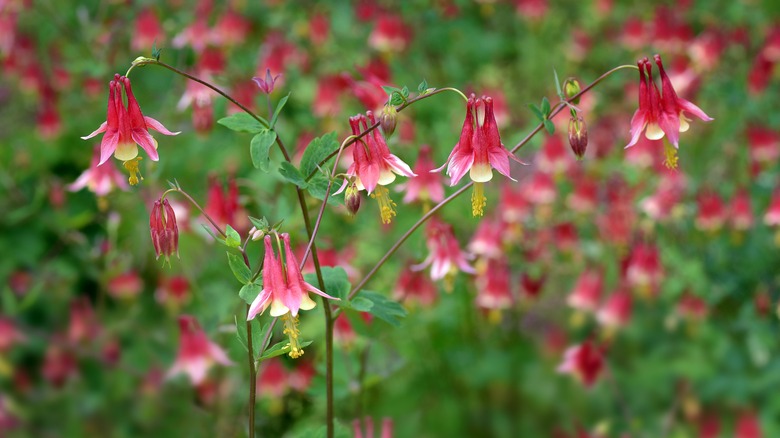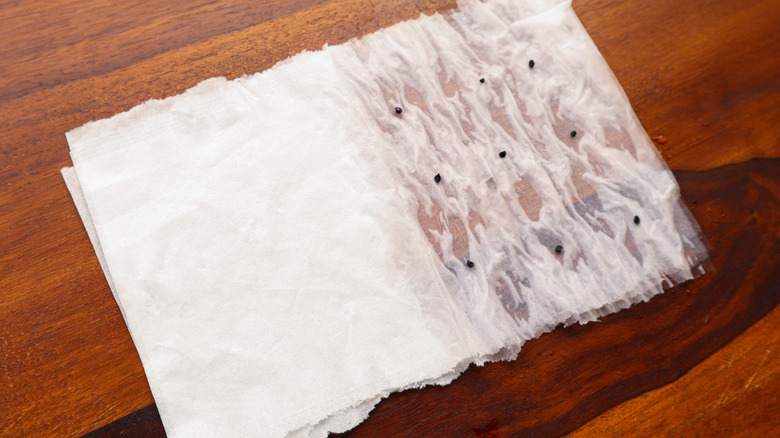How To Direct Sow Columbine Flower Seeds For Gorgeous Blooms
Spying a wild columbine in the woods during a summer hike never ceases to thrill. Even their Latin name, Aquilegia, is enchanting. Not everyone is lucky enough to have natural encounters with these blooms, but you can still enjoy the flower's delicate beauty in your own space. Columbine seeds are a bit tricky to start indoors, but fortunately, you can scatter them in your garden and let nature take care of the process.
Direct sowing seeds is simply planting seeds outdoors right where you want them to grow rather than coaxing seedlings to germinate indoors. Columbines need to go through seed stratification in order to sprout, and letting them weather the cold of late fall, winter, and early spring is key for this process.
Plant columbine seeds straight in your beds in the fall or winter. "You can even scatter them on top of a late season snow," explains Master Gardener Tiffany Selvey, House Digest's Gardening Editor. For fall planting, make sure the soil has cooled before spreading the seeds. Sowing these perennial seeds after a hard frost isn't a problem, either. Rake the beds and press seeds lightly into the soil. There's no need to cover them with extra soil, but a light sprinkling of dirt can help keep animals from snacking on them.
Direct sowing in spring
If you're too busy to plant in the fall or winter, you can also sow columbine seeds in the spring; however, unless it's very early spring, you'll need to add an extra step to your planting process. Since the they won't have benefitted from the cold winter temperatures outside to loosen up their coating, you'll need to provide the necessary chill time in your fridge. Since many columbines require moist stratification, you can mimic the outdoor overwintering of seeds by spreading the seeds on the surface of a moist paper towel, making sure each seed makes contact with the towel. Wrap the towel into a small packet, then seal it in a plastic bag and place it in your refrigerator. Check on it periodically to make sure no mold is growing on the towel. This process can also be better than overwintering seeds in your garden if your area has lots of temperature fluctuation during the winter, since the fridge will keep temperatures constant.
Before committing fridge space to your seeds, check how long of a cold period your columbine species needs. Those native to warm climates may not need any at all. Species that benefit from cold stratification may require a few weeks to several months of cold weather, so line up the timing of your last frost with your seeds' germination as closely as possible. Once your last frost date has passed, plant them as you would in the fall. Keep the soil moist until they germinate, and then thin individual seedlings about 16 inches apart. Once established, these perennial plants will last for decades.

